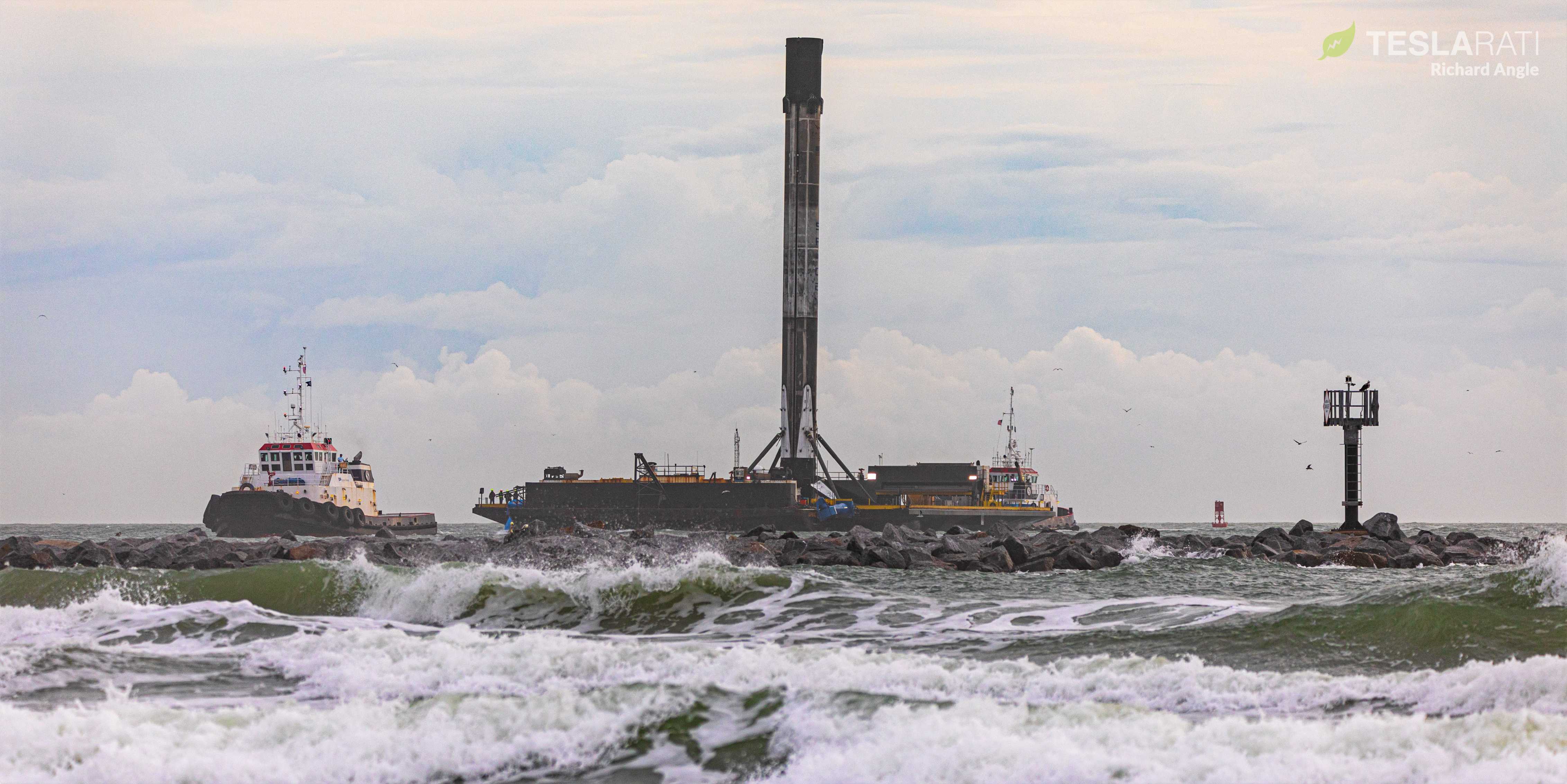

News
SpaceX Falcon 9 booster returns to port on a drone ship for the first time in six months
On November 15th, Falcon 9 booster B1048 returned to port aboard a SpaceX drone ship, the first such return in almost half a year. With that arrival, SpaceX also completed a critical Falcon 9 Block 5 reusability milestone, paving the way for B1048 to continue setting records.
On November 11th, Falcon 9 B1048 made history when it lifted off with 60 Starlink v1.0 satellites, becoming the first rocket booster to launch four separate orbital-class missions. Approximately eight and a half minutes later, B1048 also become the first orbital-class rocket booster to land after its fourth successful launch, setting the vehicle up to be SpaceX’s path leader for future nth-reuse milestones, starting with the first 5th flight in the near future.
Starlink v1.0’s November 11th launch effectively marked the start of SpaceX’s operational satellite constellation deployment, every mission of which will be an opportunity for the company to test new reusability firsts and reduce the risk before certain flight-proven hardware is offered to commercial customers. Company executives have recently indicated that SpaceX hopes to launch as many as 24 Starlink missions – each carrying ~60 satellites – in 2020, giving SpaceX a huge number of opportunities to push the envelope of booster and fairing reusability.
On the ~650 km (340 mi) trip back to Port Canaveral from drone ship Of Course I Still Love You’s (OCISLY) Atlantic Ocean recovery position, the ship – towed by tug Hawk – was forced to briefly divert northwest to escape high seas, but Falcon 9 B1048 was secured by the drone ship’s Octagrabber robot, preventing it from suffering a fate similar to Falcon Heavy booster B1055. By all appearances, the thrice-reused Falcon 9 booster survived the weather and swells unscathed, even as OCISLY itself was visibly banged around, damaging a generator and antenna.
After OCISLY and B1048 arrived in Port Canaveral on the 15th, SpaceX recovery technicians quickly craned the booster off of the drone ship, placing it on the company’s dockside rocket-processing stand. It appears that SpaceX intends to retract B1048’s four carbon fiber landing legs, potentially in a bid to rapidly turn the booster around for a second Starlink v1.0 mission before the end of 2019.
B1048.4’s in-port recovery operations also marked the first time SpaceX has used Port Canaveral’s brand new mobile crane, delivered to the port in January 2019.
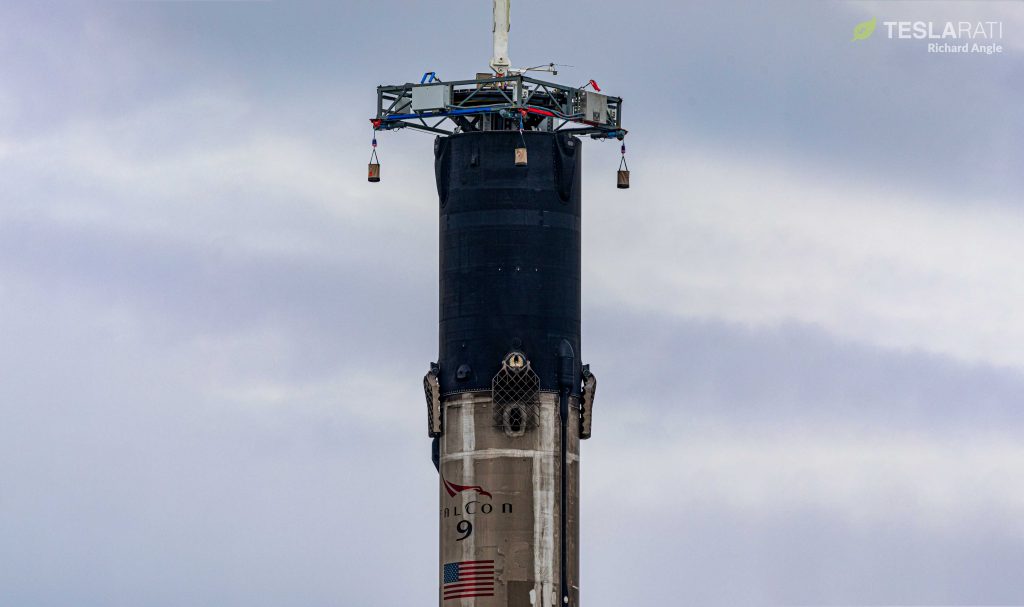
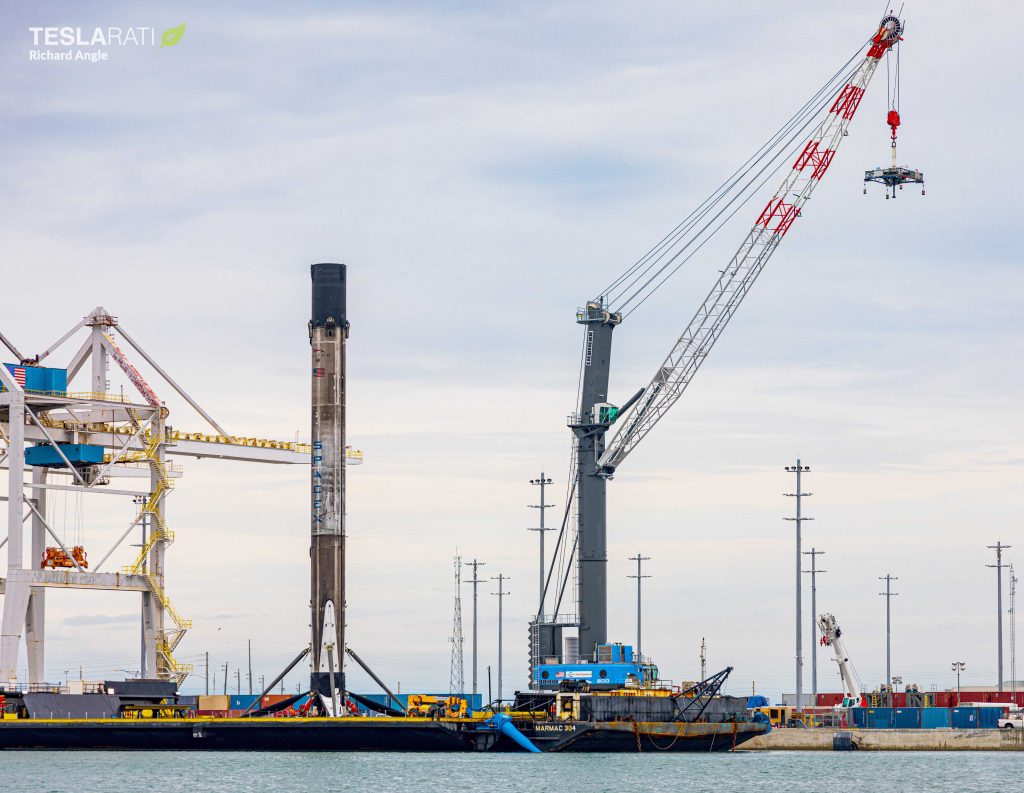
While B1048 has become the first Falcon 9 booster to launch four orbital-class missions, SpaceX has another two thrice-flown flightworthy boosters (B1046 and B1049), the former of which is preparing for its own fourth launch as early as December 2019. B1046 is assigned to Crew Dragon’s In-Flight Abort test, a mission that will almost certainly destroy the booster and its inert upper stage when Crew Dragon attempts to escape the rocket while traveling at supersonic speeds. B1049 could support another Starlink mission or the commercial debut of a thrice-flown SpaceX booster and is likely already set for flight after it completed its third launch nearly six months ago.
Coincidentally, B1048’s Nov. 15 port return was SpaceX’s first drone ship recovery since B1049’s third launch and landing, which saw that booster arrive in port in late May 2019. That nearly six-month gap is one of the longest SpaceX has gone without an ocean recovery since Falcon 9’s first successful drone ship landing in April 2016. With any luck, Starlink will ensure that a similar lull is just shy of impossible until Starship takes over and Falcon 9/Heavy is fully retired, likely a solid half a decade away.
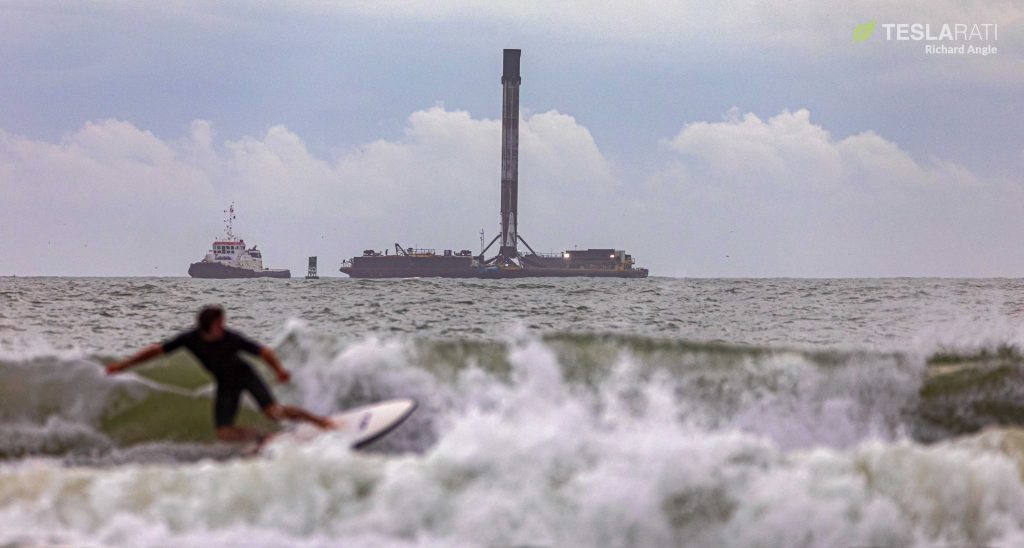
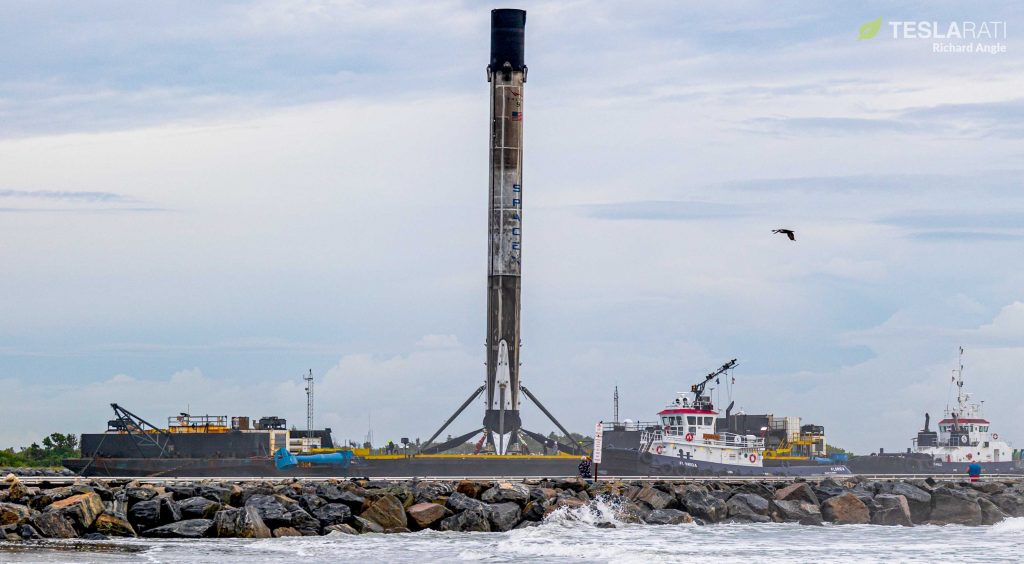
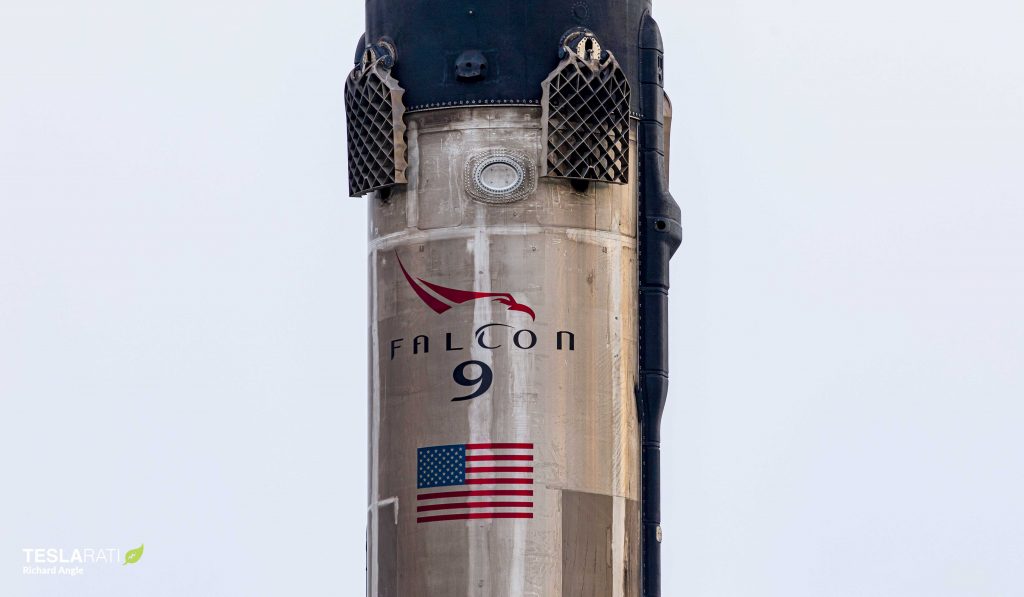
Check out Teslarati’s Marketplace! We offer Tesla accessories, including for the Tesla Cybertruck and Tesla Model 3.
News
Tesla cleared in Canada EV rebate investigation
Tesla has been cleared in an investigation into the company’s staggering number of EV rebate claims in Canada in January.

Canadian officials have cleared Tesla following an investigation into a large number of claims submitted to the country’s electric vehicle (EV) rebates earlier this year.
Transport Canada has ruled that there was no evidence of fraud after Tesla submitted 8,653 EV rebate claims for the country’s Incentives for Zero-Emission Vehicles (iZEV) program, as detailed in a report on Friday from The Globe and Mail. Despite the huge number of claims, Canadian authorities have found that the figure represented vehicles that had been delivered prior to the submission deadline for the program.
According to Transport Minister Chrystia Freeland, the claims “were determined to legitimately represent cars sold before January 12,” which was the final day for OEMs to submit these claims before the government suspended the program.
Upon initial reporting of the Tesla claims submitted in January, it was estimated that they were valued at around $43 million. In March, Freeland and Transport Canada opened the investigation into Tesla, noting that they would be freezing the rebate payments until the claims were found to be valid.
READ MORE ON ELECTRIC VEHICLES: EVs getting cleaner more quickly than expected in Europe: study
Huw Williams, Canadian Automobile Dealers Association Public Affairs Director, accepted the results of the investigation, while also questioning how Tesla knew to submit the claims that weekend, just before the program ran out.
“I think there’s a larger question as to how Tesla knew to run those through on that weekend,” Williams said. “It doesn’t appear to me that we have an investigation into any communication between Transport Canada and Tesla, between officials who may have shared information inappropriately.”
Tesla sales have been down in Canada for the first half of this year, amidst turmoil between the country and the Trump administration’s tariffs. Although Elon Musk has since stepped back from his role with the administration, a number of companies and officials in Canada were calling for a boycott of Tesla’s vehicles earlier this year, due in part to his association with Trump.
News
Tesla Semis to get 18 new Megachargers at this PepsiCo plant
PepsiCo is set to add more Tesla Semi Megachargers, this time at a facility in North Carolina.

Tesla partner PepsiCo is set to build new Semi charging stations at one of its manufacturing sites, as revealed in new permitting plans shared this week.
On Friday, Tesla charging station scout MarcoRP shared plans on X for 18 Semi Megacharging stalls at PepsiCo’s facility in Charlotte, North Carolina, coming as the latest update plans for the company’s increasingly electrified fleet. The stalls are set to be built side by side, along with three Tesla Megapack grid-scale battery systems.
The plans also note the faster charging speeds for the chargers, which can charge the Class 8 Semi at speeds of up to 1MW. Tesla says that the speed can charge the Semi back to roughly 70 percent in around 30 minutes.
You can see the site plans for the PepsiCo North Carolina Megacharger below.

Credit: PepsiCo (via MarcoRPi1 on X)

Credit: PepsiCo (via MarcoRPi1 on X)
READ MORE ON THE TESLA SEMI: Tesla to build Semi Megacharger station in Southern California
PepsiCo’s Tesla Semi fleet, other Megachargers, and initial tests and deliveries
PepsiCo was the first external customer to take delivery of Tesla’s Semis back in 2023, starting with just an initial order of 15. Since then, the company has continued to expand the fleet, recently taking delivery of an additional 50 units in California. The PepsiCo fleet was up to around 86 units as of last year, according to statements from Semi Senior Manager Dan Priestley.
Additionally, the company has similar Megachargers at its facilities in Modesto, Sacramento, and Fresno, California, and Tesla also submitted plans for approval to build 12 new Megacharging stalls in Los Angeles County.
Over the past couple of years, Tesla has also been delivering the electric Class 8 units to a number of other companies for pilot programs, and Priestley shared some results from PepsiCo’s initial Semi tests last year. Notably, the executive spoke with a handful of PepsiCo workers who said they really liked the Semi and wouldn’t plan on going back to diesel trucks.
The company is also nearing completion of a higher-volume Semi plant at its Gigafactory in Nevada, which is expected to eventually have an annual production capacity of 50,000 Semi units.
Tesla executive teases plan to further electrify supply chain
News
Tesla sales soar in Norway with new Model Y leading the charge
Tesla recorded a 54% year-over-year jump in new vehicle registrations in June.

Tesla is seeing strong momentum in Norway, with sales of the new Model Y helping the company maintain dominance in one of the world’s most electric vehicle-friendly markets.
Model Y upgrades and consumer preferences
According to the Norwegian Road Federation (OFV), Tesla recorded a 54% year-over-year jump in new vehicle registrations in June. The Model Y led the charge, posting a 115% increase compared to the same period last year. Tesla Norway’s growth was even more notable in May, with sales surging a whopping 213%, as noted in a CNBC report.
Christina Bu, secretary general of the Norwegian EV Association (NEVA), stated that Tesla’s strong market performance was partly due to the updated Model Y, which is really just a good car, period.
“I think it just has to do with the fact that they deliver a car which has quite a lot of value for money and is what Norwegians need. What Norwegians need, a large luggage space, all wheel drive, and a tow hitch, high ground clearance as well. In addition, quite good digital solutions which people have gotten used to, and also a charging network,” she said.
Tesla in Europe
Tesla’s success in Norway is supported by long-standing government incentives for EV adoption, including exemptions from VAT, road toll discounts, and access to bus lanes. Public and home charging infrastructure is also widely available, making the EV ownership experience in the country very convenient.
Tesla’s performance in Europe is still a mixed bag, with markets like Germany and France still seeing declines in recent months. In areas such as Norway, Spain, and Portugal, however, Tesla’s new car registrations are rising. Spain’s sales rose 61% and Portugal’s sales rose 7% last month. This suggests that regional demand may be stabilizing or rebounding in pockets of Europe.
-

 Elon Musk2 weeks ago
Elon Musk2 weeks agoTesla investors will be shocked by Jim Cramer’s latest assessment
-

 Elon Musk2 days ago
Elon Musk2 days agoxAI launches Grok 4 with new $300/month SuperGrok Heavy subscription
-

 Elon Musk4 days ago
Elon Musk4 days agoElon Musk confirms Grok 4 launch on July 9 with livestream event
-

 News1 week ago
News1 week agoTesla Model 3 ranks as the safest new car in Europe for 2025, per Euro NCAP tests
-

 Elon Musk2 weeks ago
Elon Musk2 weeks agoA Tesla just delivered itself to a customer autonomously, Elon Musk confirms
-

 Elon Musk1 week ago
Elon Musk1 week agoxAI’s Memphis data center receives air permit despite community criticism
-

 News2 weeks ago
News2 weeks agoXiaomi CEO congratulates Tesla on first FSD delivery: “We have to continue learning!”
-

 Investor's Corner2 weeks ago
Investor's Corner2 weeks agoTesla gets $475 price target from Benchmark amid initial Robotaxi rollout

















